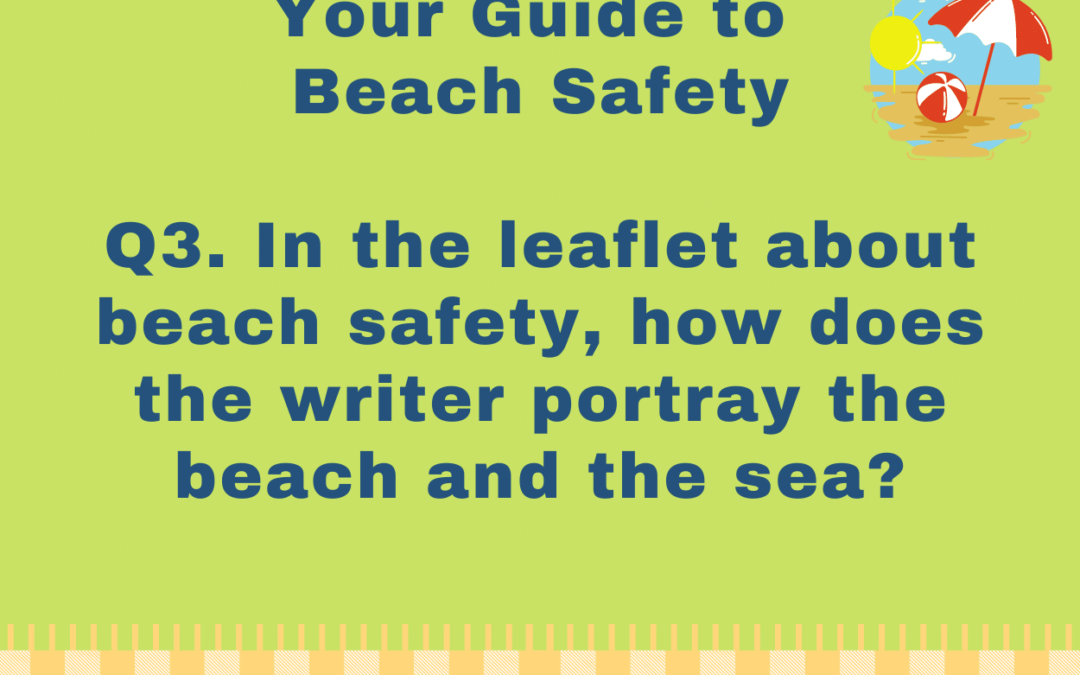Edexcel English IGCSE: Your Guide to Beach Safety by V Denman
Q3. In the leaflet about beach safety, how does the writer portray the beach and the sea?
In your answer, consider:
- the appearance and layout of the leaflet;
- the beach activities described;
- the necessity of lifeguards;
- the writer’s use of language techniques.
You should refer closely to the passage to support your answer. You may use brief quotations.
Edexcel English IGCSE Model Essay by an Expert
In this leaflet, the beach and sea are portrayed as fun places to visit, which can nevertheless be fraught with life-threatening dangers. Lifeguards ensure that visitors’ time on the beach is both fun and safe.
The appearance of the leaflet reflects the writer’s portrayal of the beach as both fun and potentially dangerous. The picture on the front cover shows two young children playing happily in the sea, which shows how fun the beach can be when people are safe. There is a lifeguard on a jet-ski in the background, showing that he can respond quickly to any dangerous situations and reminding the reader that things can go wrong. The leaflet uses bright primary colours; whilst these colours are associated with childhood and fun, they are also colours of danger and warning, reflecting the fun but dangerous nature of the beach. Information about how to stay safe is presented in an attractive way. For example, in the section about ‘Rips’, the writer is describing a potentially life-threatening situation. However, the bullet points are stars, and the pictures seem stuck in like a scrap-book. This gives the information a non-threatening appearance, reflecting that the beach can be fun if certain rules are followed.
The beach activities described in the leaflet are presented as enjoyable, but sometimes unsafe. In the section entitled “Swimming, Surfing & Bodyboarding”, the same structure is used to open the first two paragraphs. The activity is first described in positive terms: swimming is described as “one of the best all-round activities”, and surfing and bodyboarding are described with alliterative enthusiasm as “fantastic fun”. Following this positive description is a clause beginning “but”, which then describes the potential dangers of the activity. The writer does not intend to discourage people from enjoying water activities, but still wants them to be aware of what can go wrong.
Lifeguards are presented as vitally important in ensuring that the beach is a fun and safe place to visit. In the “True Story”, the necessity of lifeguards is shown through a description of an event in which two boys would have drowned if a lifeguard hadn’t helped them. The story is dramatic, with the use of language techniques such as alliteration to highlight the impact of their experience: the two big teenagers were “shaking with shock”. Importantly, Carolyne and her sons have not been put off going to beaches, but they will “certainly always” go to beaches where lifeguards are present. Again, this shows that the beach is fun and can be safe, but only when lifeguards are there to help in emergencies.
This leaflet does not attempt to scare people or suggest that the beach is too dangerous to enjoy. However, it describes the things that can go wrong, so that people are aware of the potential threats to their safety.




